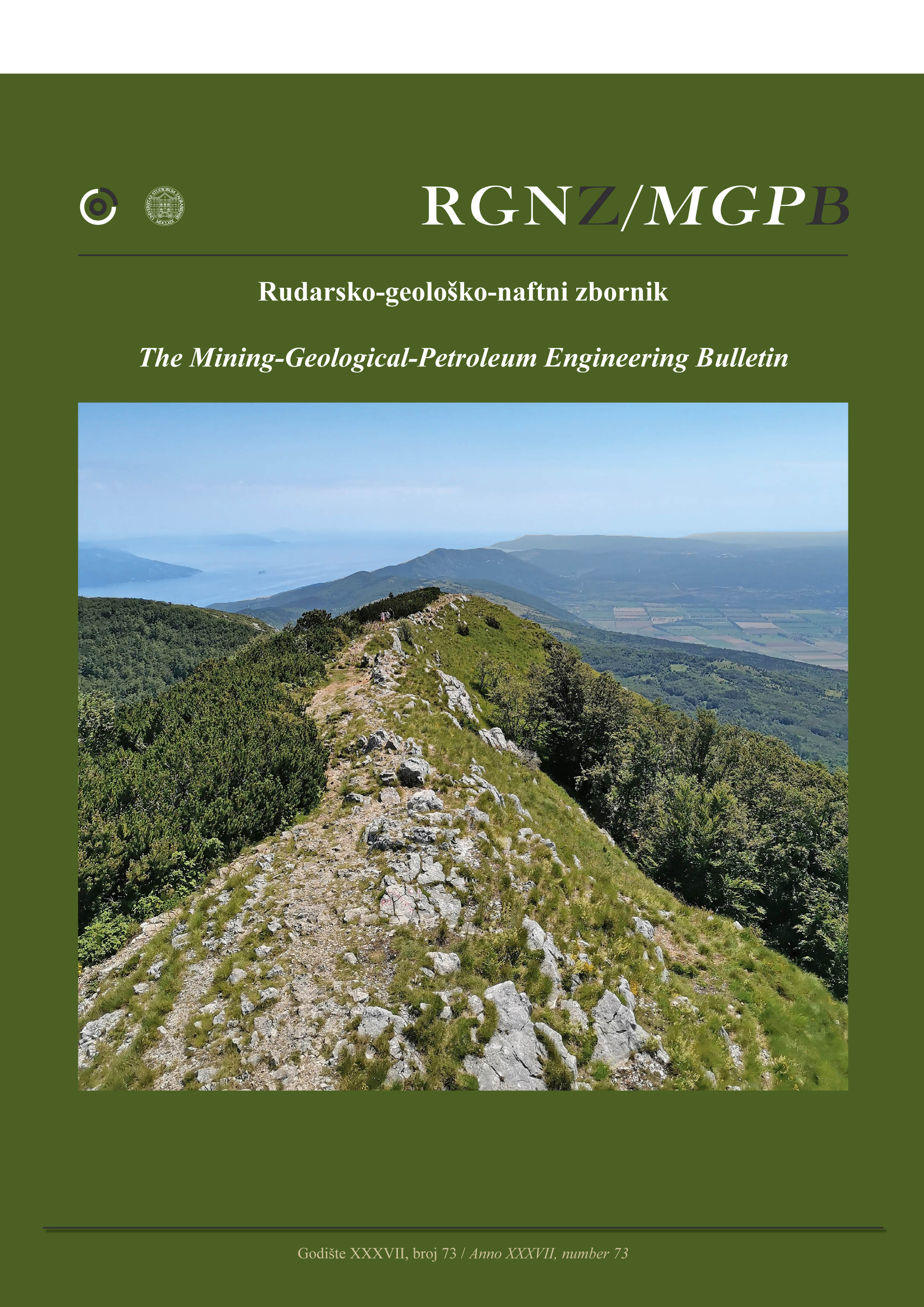Mapping Rayleigh Wave Group Velocities from Ambient Noise in the Way Ratai Geothermal Field Using PiGraf Seismograph Prototypes
DOI:
https://doi.org/10.17794/rgn.2025.2.1Keywords:
ambient noise tomography, geothermal, PiGraf prototype, Rayleigh wave group velocity, Way RataiAbstract
Since 2018, the research team has been investigating and developing a prototype sensor for recording seismic activity. An upgrade has been developed and must be evaluated, primarily to monitor ambient noise activities in the geothermal environment. This study aims to determine the group velocity of Rayleigh waves using ambient noise tomography (ANT) analysis in the Way Ratai geothermal region utilising four PiGraf seismograph prototypes. The acquisition method deploys a stationary inter-station around 5 kilometres (km) apart for seven consecutive days, with 100 samples per second (SPS). Fast marching surface tomography (FMST) has been utilised to generate group velocity from a cross-correlated time series, which produces tomographic images. The results showed that the ambient noise energy distribution originated from the northwest to the southeast, most likely from the sea. At the same time, the group velocity from the Green’s function group in the period range 0.2 s to 0.5 s, 0.5 s to 1 s, and 1 s to 5 s are 0.337 km/s, 0.415 km/s, and 0.427 km/s, respectively. These values are aligned within the dispersion curve’s velocity range of 0.3–0.8 km/s. The group velocity modelling of Rayleigh waves in the period range of 0.5 s to 1 s also identified a pattern corresponding with the geothermal potential area, confirming prior findings. However, the clarity of the cross-correlogram of the Green’s function group was identified as a topic for further investigation, suggesting adding more stations and longer measurement times.
Downloads
Published
Issue
Section
License
Copyright (c) 2024 Karyanto, Haidar Prida Mazzaluna, I Gede Boy Darmawan, Rahmat Catur Wibowo, Ahmad Zaenudin, Maman Hermana

This work is licensed under a Creative Commons Attribution 4.0 International License.
Creative Commons-BY
Authors who publish with this journal agree to the following terms:
In agreeing this form, you certify that:
- You read the ethical codex of the RGN zbornik available at journal web.
- You submitted work is your original work, and has not previously been published and does not include any form of plagiarism.
- You own copyright in the submitted work, and are therefore permitted to assign the licence to publish to RGN zbornik.
- Your submitted work contains no violation of any existing copyright or other third party right or any material of an obscene, libellous or otherwise unlawful nature.
- You have obtained permission for and acknowledged the source of any illustrations, diagrams or other material included in the work of which you are not the copyright owner.
- You have taken due care to ensure the accuracy of the work, and that, to the best of your knowledge, there are no false statements made within it.
- All co-authors of this submitted work are aware of, and in agreement with, the terms of this licence and that the submitted manuscript has been approved by these authors.
Publication licence
You retain copyright in your submitted work, according to journal license policy (CC-BY). By signing this form you agree that RGN zbornik may publish it under the publication licence. In summary the licence allows the following:
Anyone is free:
- To copy, distribute, display, and perform the work.
- To make derivative works.
Under the following conditions:
- The original author must always be given credit.
- The work may not be used for commercial purposes.
- If the work is altered, transformed, or built upon, the resulting work may only be distributed under a licence identical to this one.
Exceptions to the licence
In addition to publishing the work printed under the above licence, RGN zbornik will also enable the work to be visible online.
The journal editorial can change the licence rules anytime but it cannot retroactively restrict author(s) rights.


